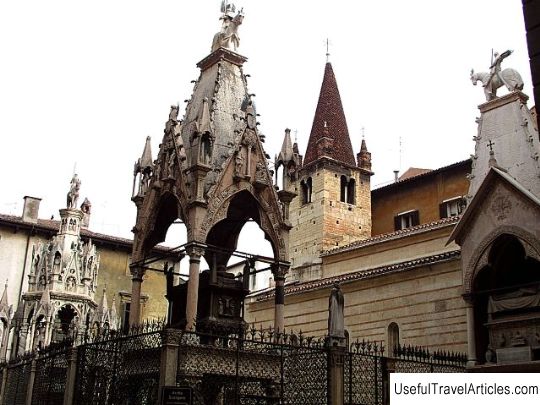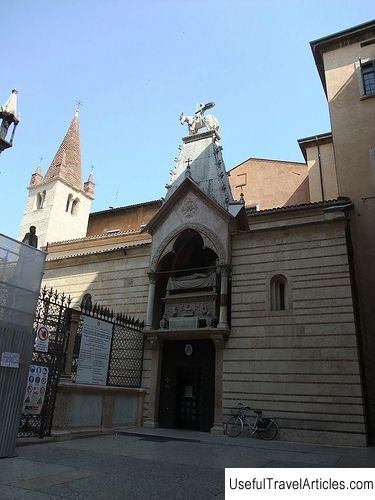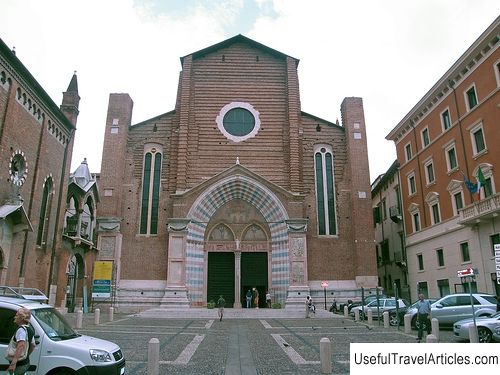Arche Scaligere description and photos - Italy: Verona
Rating: 8,1/10 (2433 votes) 
Arche Scaligere description and photos - Italy: Verona. Detailed information about the attraction. Description, photographs and a map showing the nearest significant objects. The name in English is Arche Scaligere. Photo and descriptionThe Arches of the Scaliger, located near the Church of Santa Maria Antica, are Gothic tombstones of the three medieval rulers of Verona from the Scaliger family who ruled in the 13-14 centuries. The model for the arches was the hanging sarcophagus of Guglielmo di Castelbarco, built in 1320 and today located at the church of Santa Anastasia. At the very entrance to the Church of Santa Maria Antica, you can see a copy of the Arch of Cangrande I della Scala, made in the form of a tabernacle - a tower-like open extension. The original is now kept in the Castelvecchio Museum. The author of this creation remained unknown, although many art critics consider the arch to be the work of Giovanni Rigino. Kangrande I himself - the greatest of all Scaligers - is depicted on the tombstone in two poses: lying in the arms of eternal sleep and sitting on a horse. The last image is made at the top of the arch. This tombstone is considered one of the most outstanding examples of 14th century Verona sculpture. The Arch of Mastino II is decorated with numerous figures of angels and saints, and Mastino himself is depicted dressed in armor and riding a horse. The construction of the arch began during the lifetime of the ruler, who died in 1351. Finally, the Arch of Cansignorio, built in 1375 by Bologna craftsmen Gaspare Broaspini and Bonino da Campione, has a hexagonal shape and is decorated with twisted columns. Sculptures and bas-reliefs can be seen on the edges of the tombstone, and a statue of Cansignorio stands on top. Despite its artistic and historical value, by the end of the 16th century the Arches fell into disrepair. A large-scale restoration of the tombstone of Mastino II was carried out only in 1786, and in 1839 the entire monumental complex was put in order. Next to the Arches of the Scaligers are the burials of other members of this once powerful family - Mastino I (in Piazza dei Signori near the Church of Santa Maria), Alboino, Bartolomeo, Alberto I (his richly decorated tombstone repeats the sarcophagus of Mastino I ) and Kangrande II.        We also recommend reading Chinese Garden description and photos - Singapore: Singapore Topic: Arche Scaligere description and photos - Italy: Verona. |




